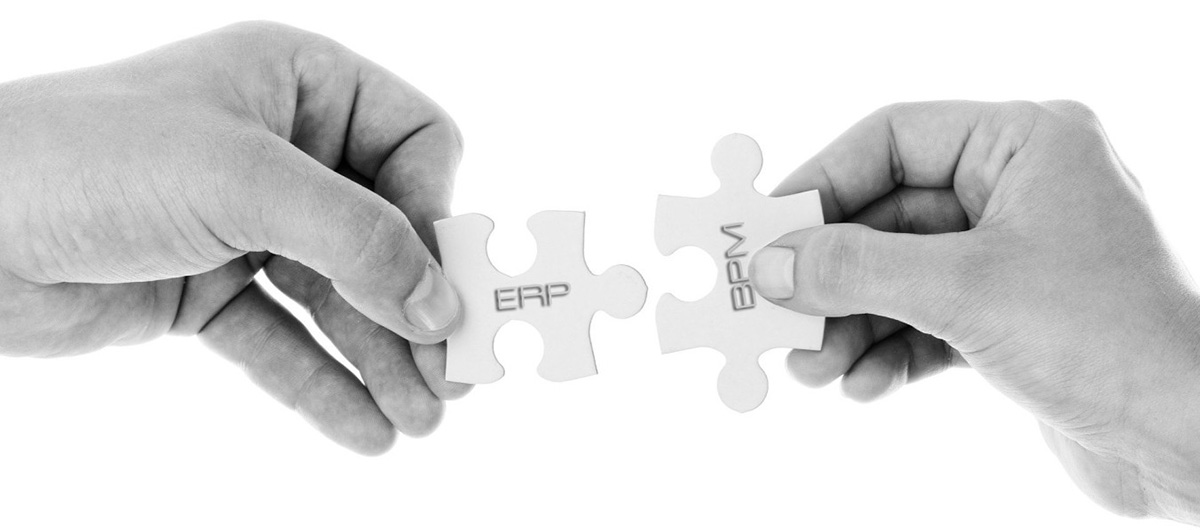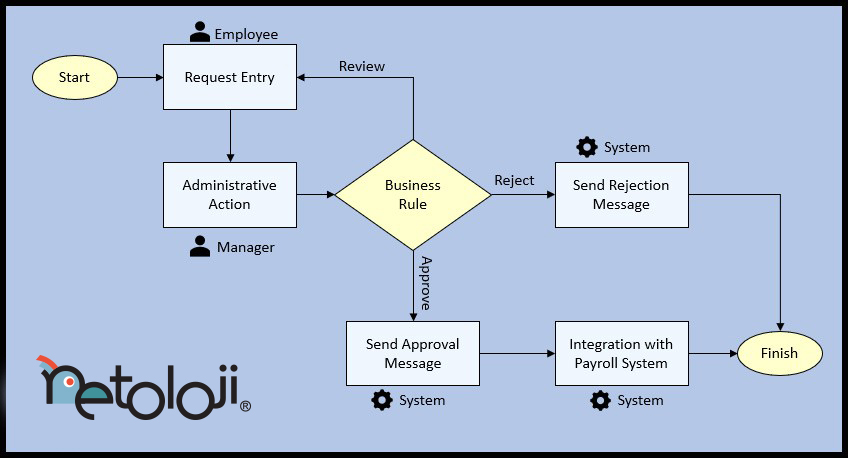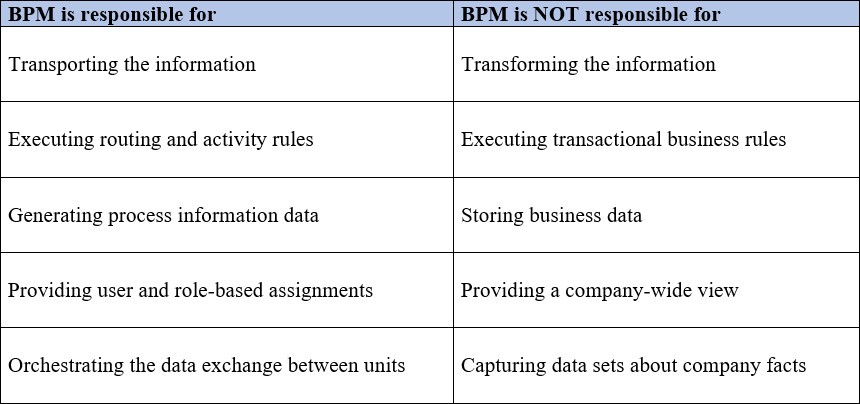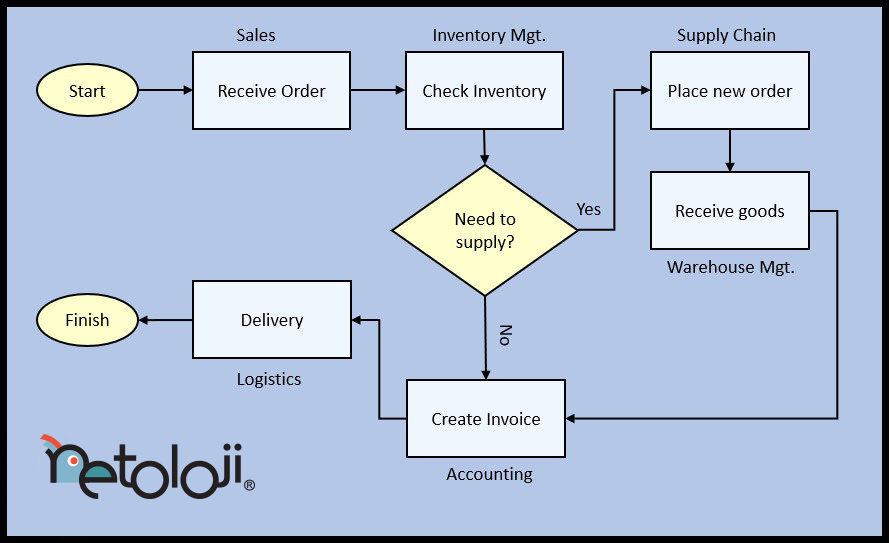
The more I get into conversation with people about the business platforms they are using within their organization, the more I realize, that the confusion over business process management (BPM) & enterprise resource planning (ERP) is bigger than I was expecting. During a recent small talk, a colleague of mine with many years of experience in ERP consulting asked me, -not in an ironic way- who would need to implement a BPM platform. I think, that’s a big question mark for many, whether they are on the technical or on the operational side. So, I decided to write an article about this issue to help remove some of the fog around these 2 good companions.
Uncovering the BPM mystery
I think, there are enough people out there, who would benefit from a formal definition of BPM. BPM is a universal abbreviation for Business Process Management. The term itself means more than just a software, it’s a practice or methodology to identify, change and monitor business processes. But, since we’re discussing software systems, I’m not going to dive into fundamentals of the methodology. In this context, if I mention BPM, I refer to BPM software.
Let’s start with defining the term “business process”. A process is the sequence of interrelated tasks, each executed by a robotic or human actor, triggered with a set of input to deliver a specific result. Almost every repeatable function with multiple steps in an enterprise can be considered as a process. A very simple and common business process, which almost every organization possesses, is vacation management. An employee, who wants to take vacation, fills out a form by entering the dates of his/her absence. A manager approves, rejects or returns the application for review. In case of approval, an automated integration informs and updates the payroll system accordingly.

This simple and typical flowchart helps us to visualize the paticipants, tasks, rules, routing options and start and finishing points. By using this model, it’s quite easy to identify the organizational and technical requirements, as well as potential bottlenecks, and integrations.

BPM offers solutions to accomplish various goals in different perspectives from a process-oriented perspective. By implementing a BPM, you can achieve corporate objectives like
- Standardize the way to complete a business function and provide a consistent systematic approach
- Restructure the organization for more optimal response and mission completion times
- Ensure quality standard compliance and thus accreditations
- Comply with regulations by using approval, monitoring and control mechanisms
- Improve value production by reducing inefficiencies in production lines
BPM also provides critical metrics for decision makers. Capacity, productivity, quality, completion time indicators and many more can be available by analyzing the big datasets created by the bpm system. These metrics include all details and issues within single process instance, which can be consolidated to show common problems and optimization possibilities for workflows.
A few words about ERP
ERP, totally different to the BPM, focuses on complete modules like accounting, human resources, finance etc. Its main goal is to provide necessary instruments and (if possible) automation to execute the function set of these modules. To make it clearer, here is another flowchart displaying the set of transactions executed by the ERP system to complete an incoming order.

Each box on the picture symbolizes a different module with the relevant function from its repository. Each transaction creates a result and a new dataset on the central database. You cannot see the details of functions here, since they usually show a process character like “placing new order” function of Supply Chain unit. To place an order, the unit needs to look for prior procurements of the required products, check pricing and quantities, get some offers from suppliers if necessary or find some suppliers, get an approval from administration, then finally fill out the order form and send it to the supplier. Not forgetting, there are sub-transactions within the main transaction, which create intermediate results to feed the next sub transaction in line. Eventually, placement of the new order will be achieved.
As you can clearly see, ERP allows the automation and execution of back-office functions spread to diverse business units of the organization. You can track every single function and consolidate a big snapshot of the enterprise.
Key Differences and Opportunities
There is a metaphor, I like to use to emphasize the difference and synergy between ERP and BPM. Whereas BPM has the role of the circulatory system, ERP replaces the muscular system of the human body. Without ERP, the organization can’t complete a transaction. And if there’s no BPM, information flow between business units and data sources is less controllable.
BPM platforms offer a wide range of tools to improve process architecture right away. Many low-code or no-code products allow designers to change and optimize any part of the workflow, add or remove users/roles, create approval mechanisms and complex routing schemas. For a BPM system, continuous improvement, scalability and flexibility have priority but they lack transactional context.
On the other hand, an ERP system provides limited capabilities for information flow and rule engine. It may handle the process under consideration, but the organizational structure of the enterprise may not match the requirements, or the process is being defined with a totally different approach to that of the ERP. A customization is normally possible, but it usually ends up as a development project, which is time-consuming and expensive.
So why not layer a BPMs over an ERP? A BPM powered ERP combination can bring many advantages. Here are some of the benefits of using BPM with ERP:
- The data is usually spread across business units in an organization. BPM improves the completion of data necessary to execute a business function. An organization-wide contribution and collaboration of business units becomes easier.
- If your organization is mature enough, you may want to develop your own workflows to cater for your specific needs. BPM enables innovation and restructuring of workflows in a cost-effective way. It drives continuous improvement.
- BPM can add many enhanced functions and mechanisms to existing ERP systems. Without changing core transactional systems; check lists, constraints, business rule and approval cycles can be attached to processes.
- SMAC (social, mobile, analytics, cloud) is the concept that drives business innovation. A BPM layer can boost the integration of SMAC platforms with the underlying ERP system.
- BPM simplifies the transition for processes improvement and development, reduces invisible costs resulting from long learning curves and organizational resistance.
A successful implementation of BPM on top of ERP brings competitive advantages and contributes to achieve efficiency and agility combined. It’s also a great way to introduce a culture of continuous improvement to your organization. If there’s an opportunity to implement these 2 platforms together, don’t say no, before you discover their potential.